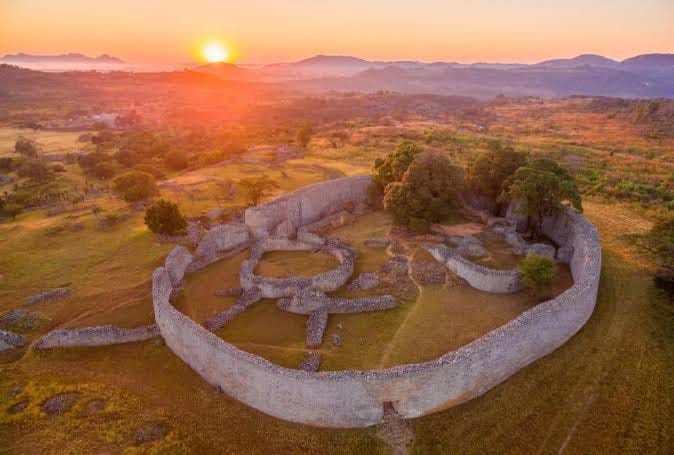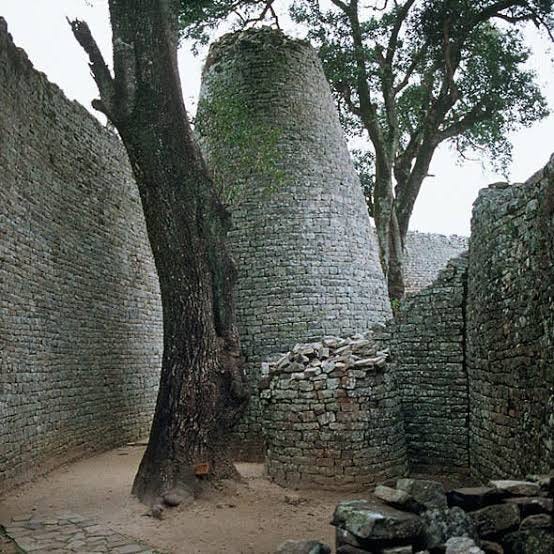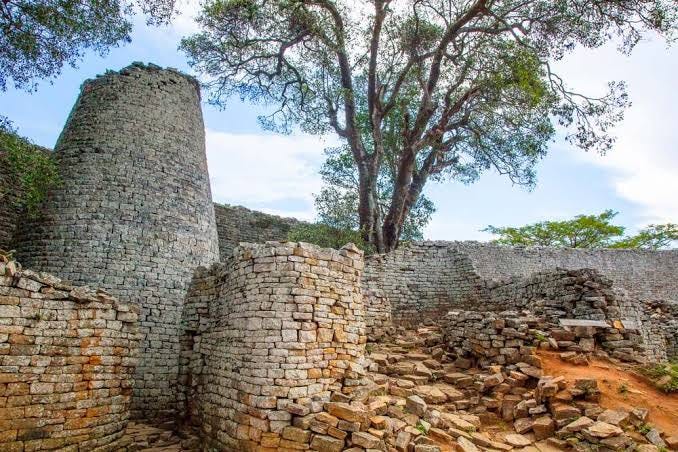We will begin our exploration by moving the clock back to the 11th century to discover the Great Zimbabwe, which is the most impressive ancient architectural and cultural site in sub-Saharan Africa. Built between the 11th and 15th centuries, the city was once the capital of the kingdom of Zimbabwe. The most striking features of Great Zimbabwe are its monumental stone walls, which were made out of granite blocks fitted together without mortar.
pictures of the Great Zimbabwean ruins - not our pictures.
The great Zimbabwe was located along important trade routes and served as a centre of commerce, with evidence of trade with civilisations as far as China and Persia shown from the artefacts found, such as Chinese pottery and Persian glass. The city accumulated wealth through the trading of gold, ivory, copper, agriculture, and cattle herding. The complex also housed a sophisticated society, with evidence of a ruling class, skilled craftsmen, and a hierarchical social structure. The site's intricate design and impressive construction have led to speculation and debate about its purpose and the advanced engineering techniques used in its creation.
The Great Zimbabwe was abandoned in the 15th century, which is speculated to have been caused by overpopulation and the working out of gold, but the ruins stand today as a symbol of the early Shona civilization. The ruins of Great Zimbabwe have long been a source of intrigue and controversy regarding who built the stone structures. For decades, European explorers and archaeologists refused to believe that the ancestral Shona people could have built such an advanced site.
Several claims were made as to who built the great Zimbabwe, as it possessed such great architectural skills. It was believed that the great Zimabbwe was built by the queen of Sheba or King Solomon in the 10th century BC, while others thought it was built by the Phoenicians, an ancient seafaring civilisation from the Mediterranean. These claims were motivated by a racist unwillingness to credit black Africans with constructing such a sophisticated city.
Modern archaeological evidence has conclusively proven these theories false. Radiocarbon dating shows the Great Zimbabwe was built between the 11th and 15th centuries AD by the Shona people. The ruins contain artefacts like soapstone bird carvings and pottery that are clearly of Shona origin. The stone used to build the walls, called danga, is also indigenous to the area. The Shona people, skilled in stonemasonry, used the danga stones to create the impressive architecture of Great Zimbabwe. This complex includes structures such as the Great Enclosure and the Hill Complex, demonstrating advanced engineering and design. The soapstone bird carvings found at the site are believed to have held spiritual significance for the Shona, further connecting the ruins to their culture and heritage.
While the controversy has been put to rest, these discredited theories were used to justify colonial rule in Zimbabwe for decades. The fight to correct these myths and recognise the Shona people as the builders of great Zimbabwe was an important step in the long struggle against colonialism and for African empowerment . The ruins stand as a testament to the architectural and engineering genius of the ancestral shona and their rightful place as one of the great African civilisations .
Signed ,
F&K






